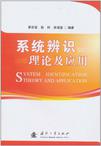系统辨识理论及应用
2011-2
国防工业出版社
李言俊,张科,余瑞星 编著
300
446000
无
本书主要阐述系统辨识的基本原理以及应用。本书共分14章。第1章至第4章为绪论、系统辨识常用输入信号、线性系统的经典辨识方法和动态系统的典范表达式,主要回顾和介绍了与系统的辨识有关的一些基础知识。第5章至第12章为最小二乘法辨识、极大似然法辨识、时变参数辨识方法、多输入—多输出系统的辨识、其他一些辨识方法、随机时序列模型的建立、系统结构辨识和闭环系统辨识等,介绍了系统辨识常用基本方法,是系统辨识的主要内容。第13章和第14章分别介绍了系统辨识在飞行器参数辨识中的应用和神?网络在系统辨识中的应用。
Chapter 1 introduction
1.1 Classification of Mathematic Models of System and Modelling
Methods
1.1.1 Signification of Model
1.1.2 Representation Forms of Models
1.1.3 Classification of Mathematic Models
1.1.4 Basic Methods to Establish Mathematic Model
1.1.5 Basic Principles Followed for Modeling
1.2 Definition, Content and Procedure of Identification
1.2.1 Definition of Identification
1.2.2 Content and Procedure of Identification
1.3 Error Criteria Usually Used in Identification
1.3.1 Output Error Criterion
1.3.2 Input Error Criterion
1.3.3 Generalized Error Criterion
1.4 Classification of System Identification
1.4.1 Off-line Identification
1.4.2 On-line Identification
Problems
Chapter 2 Commonly Used Input Signals for System
Identification
2.1 Selective Criteria of Input Signal for System
Identification
2.2 White noises and Its Generating Methods
2.2.1 White Noise Process
2.2.2 White Noise Sequence
2.2.3 Generating Methods of White Noise Sequence
2.3 Generation of Pseudorandom Binary Sequence-M-Sequence and Its
Properties
2.3.1 Pseudorandom Noise
2.3.2 Generating Method of M-Sequence
2.3.3 Properties of M-Sequence
2.3.4 Autocorrelation Function of Two-Level M-Sequence
2.3.5 Power Spectral Density of Two-Level M-Sequence
Problems
Chapter 3 Classical Identification Methods of Linear System
3.1 Identify Impulse Response of Linear System by Use of
M-Sequence
3.2 Obtain Transfer Function from Impulse Function
3.2.1 Transfer Function G(s) of Continuous System
3.2.2 Transfer Function of Discrete System—Impulse Transfer
Function G(z-1)
Problems
Chapter 4 Canonical Expression of Dynamic Systems
4.1 Parsimony Principle
4.2 Representations of Difference Equation and State Equation of
Linear System
4.2.1 Representation of Difference Equation of Linear
Time-Invariant System
4.2.2 Representation of State Equation of Linear System
4.3 Deterministic Canonical State Equations
4.3.1 Controllable Form of Canonical State Equation I
4.3.2 Controllable Form of Canonical State Equation II
4.3.3 Observable Form of Canonical State Equation I
4.3.4 Observable Form of Canonical State Equation II
4.3.5 Observable Form of Canonical State Equation I of Mimo
System
4.3.6 Observable Form of Canonical State Equation II of Mimo
System
4.4 Deterministic Canonical Difference Equations
4.5 Stochastic Canonical State Equations
4.6 Stochastic Canonical Difference Equations
4.7 Prediction Error Equation
Problems
Chapter 5 Least-Squares Identification
5.1 Least Square Method
5.1.1 Algorithns of Least-Square Estimation
5.1.2 Input Signals for Least-Squares Estimation
5.1.3 Probability Properties of Least-Squares Estimation
5.2 A Kind of Least Squres Which Need Not Invert Matrix
5.3 Recursive Least Squares
5.4 Auxiliary Variable Method
5.5 Recursive Auxiliary Variable Method
5.6 Generalized Least Squares
5.7 An Alternative Generalized Least Squares Technique (Hsia
Method)
5.8 Extended Matrix Method
5.9 Multistage Least Squares
5.9.1 The First Algorithm
5.9.2 The Second Algorithm
5.9.3 The Third Algorithm
5.10 Fast Multistage Least Squares
Problems
Chapter 6 Maximum-Likelihood Identification
Chapter 8 Identification of Multi-Input Multi-Output Systems
Chapter 9 Some Other Kinds of Identification Methods
Chapter 10 Establishment of Random Time Series Models
Chapter 11 Structure Identification of System
Chapter 12 Identification of Closed-Loop System
Chapter 13 Application of System Identification to Parameter
Identification of Aircraft
Chapter 14 Applicatiom of Neural Network to System
Identification
References
版权页:插图:The aerodynamic forces on the aircraft decide the motion states of the aircraft, and the flight states satisfy a six freedom motion equation set derived according to Newton's second law, and the equation set is an ordinary differential equation set in which time t is an argument, so the aerodynamic parameter identification belongs to the parameter identification of the centralized-parameter system. The aerodynamic heat on the aircraft decides the temperature distribution course on the aircraft, and it is a function of not only time but also space position. The state equation set of the system is a partial differential equation set derived according to the thermal conductance law and the energy conservation law, so the aero thermodynamic parameter identification belongs to the distributed parameter identification and to the function identification.Objective of the aerodynamic parameter identification is to establish mathematical models of aerodynamic coefficients, amely to establish relation between the aerodynamic coefficients and the parameters of aircraft. The relation may be algebraic equation, differential equation or integral equation. The first established aerodynamic mathematic model is a linear algebraic equation, and it only is applicable to small attack angle state of aircraft. The linear models have got extensive applications in development of aircraft, and up to now they still are the foundations for analyses of aircraft stability, flight quality and flight performance. Development of the linear aerodynamic parameter identification has been very mature, and main development branches of aircrafts in all the country have stock themselves software packages for linear aerodynamic parameter identification, among them the most practical and most effective one is the software package for maximumikelihood identification. When the aircraft is located in large attack angle flight phase, for example, in stalling or tail spinning phase of an airplane and in large maneuvering phase of a tactical missile, the linear aerodynamic models are inapplicable. Up to now, various forms of nonlinear aerodynamic mathematical models, such as polynomial, spline function, step response function, differential equation and so on, have been investigated. At present the focal point of the research work for the aerodynamic parameter identification is to investigate algorithms and applications of parameter identification for non-steady aerodynamic delayed effect, nonlinear aerodynamic parameters and nonlinear closed-loop systems.
《系统辨识理论及应用》是由国防工业出版社出版的。

无
内容详细作为教材用的
内容很好,速度很快,值得购买
收到了,很好,谢谢,正在看。
买到手才发现是英文教材。推荐买国外英文原版教材。
学校要用的书,这门课开的还是不适合本科生
这本书是西北工业大学的老师写的一本书,所以工科性更强些,在一些理论上面没有下太大的功夫,MATLAB编程起来比较适用。如果想了解更深的理论性的东西话,应该再买点别的书籍
本书理论的东西讲的略多,应该多补充些实际应用。
本书除了介绍经典的辨识方法外,还将当前的一些新的辨识方法也添加进来,并有一些实际应用的例子。